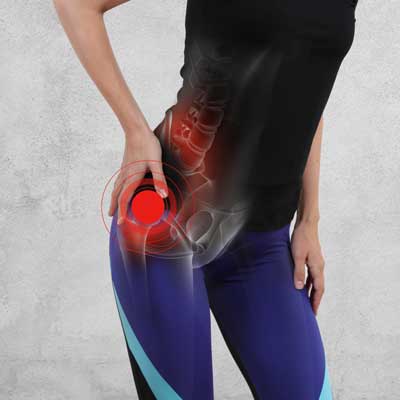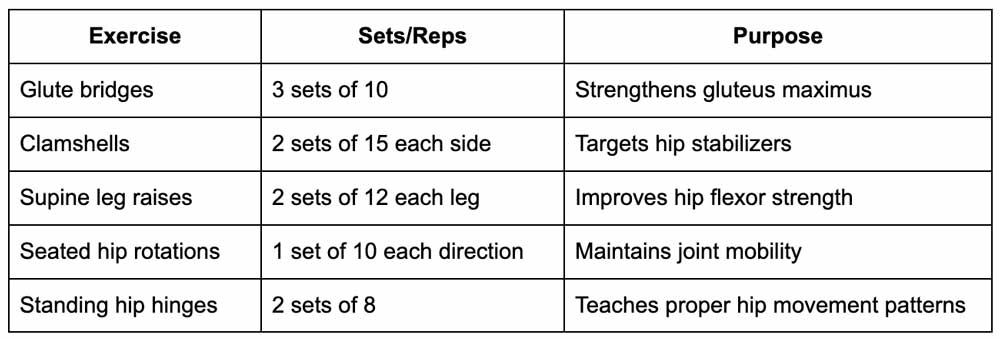Treatment for Hip Arthritis Without Surgery: A Chiropractor’s Guide

Struggling with hip pain but want to avoid surgery? You’re not alone – and the good news is, you have options. Chiropractic care offers a proven, non-surgical approach to managing hip arthritis, helping reduce pain, improve mobility, and restore your quality of life.
At Southport Chiropractic in Fairfield, CT, we’ve helped thousands of patients find lasting relief from hip arthritis using non-invasive techniques. With Dr. Richard Pinsky’s 35 years and Dr. Cathy Brodows’ 25 years of experience, our team specializes in personalized, corrective care designed to address the root cause of your pain – without surgery.
In this guide, we’ll break down how chiropractic treatment works for hip arthritis – and help you decide if it’s the right choice for your recovery.
What Is Hip Arthritis?
Hip arthritis occurs when the protective cartilage cushioning your hip joint wears down over time, leading to bone-on-bone contact, inflammation, and pain. While there are several types of arthritis, two are most common in the hip:
- Osteoarthritis: The “wear-and-tear” form that develops gradually as cartilage breaks down with age and use
- Rheumatoid arthritis: An autoimmune condition where the body’s immune system attacks the joint lining
Regardless of type, hip arthritis typically presents with:
- Pain in the groin, outer thigh, or buttocks
- Morning stiffness lasting 30+ minutes
- Reduced range of motion
- Difficulty with daily activities like putting on socks
- A “catching” or “locking” sensation during movement
Several factors can increase your risk of developing hip arthritis, including:
- Advanced age (most common in those over 50)
- Previous hip injuries or trauma
- Family history and genetic predisposition
- Excess body weight adding stress to weight-bearing joints
- Repetitive movements or occupational strains
Why People Seek Alternatives to Surgery
While hip replacement surgery can be effective, it’s a major procedure with significant considerations:
- 3-6 month recovery period
- Risk of complications including infection, blood clots, and implant failure
- Extensive physical therapy requirements
- Potential for revision surgeries (especially for younger patients)
Many of our patients initially come to us expressing concerns like:
“I’m too young for a replacement – my doctor says I’ll need another one in 15 years.”
“I can’t take that much time off work for recovery.”
“I’m worried about complications from surgery at my age.”
Top Non-Surgical Treatment Options for Hip Arthritis
Corrective Chiropractic Care
How Chiropractic Can Help Hip Arthritis
Many people don’t realize that hip pain often stems from imbalances in the entire kinetic chain – not just the hip joint itself. At Southport Chiropractic, we take a whole-body biomechanical approach that includes:
- Identifying and correcting pelvic misalignments that place uneven stress on the hip joints
- Addressing spinal imbalances that change how you walk and stand
- Improving overall posture to distribute weight properly through the hips
- Enhancing joint mobility to reduce stiffness and pain
This comprehensive approach means we’re not just temporarily masking symptoms – we’re creating lasting improvements in how your body functions.
Real Techniques Used
Our treatment protocols include several gentle, effective techniques specific to hip arthritis:
- Gentle spinal and pelvic adjustments to restore proper alignment and reduce compensatory patterns
- Activator method (a low-force instrument adjustment) for sensitive patients who prefer a lighter touch
- Thompson drop-table technique that uses leverage and a specialized table to make adjustments comfortable
- Soft tissue therapy targeting tight muscles around the hip complex
- Joint mobilization techniques to gradually improve range of motion
Case Study from Southport Chiropractic
Susan, a 68-year-old retired teacher, came to us after being told she needed a hip replacement. Her X-rays showed moderate joint space narrowing, and she rates her pain as 8/10. She could walk only one block before needing to rest.
Our 12-week corrective plan included:
- Twice-weekly chiropractic sessions focusing on pelvic alignment
- Daily specific exercises to strengthen her core and gluteal muscles
- Anti-inflammatory nutritional support
- Gradual walking program
Results:
- Pain reduced to 2/10 (only occasional discomfort with weather changes)
- Walking endurance increased to 1 mile without pain
- Follow-up X-rays showed improved standing posture and weight distribution
- Surgery indefinitely postponed – three years later, she remains active and comfortable
Physical Therapy & Movement Exercises
Movement is medicine for arthritic joints, but the right kind of movement matters. We typically recommend:
- Glute strengthening exercises to improve hip stability and support
- Gentle stretching of hip flexors and rotators to maintain mobility
- Low-impact cardio like swimming or stationary biking to maintain fitness without joint stress
- Balance training to prevent falls and improve proprioception
A simple starter routine we often prescribe includes:

Anti-Inflammatory Lifestyle Support
Inflammation drives arthritis pain, so reducing it naturally can make a significant difference:
Nutritional recommendations we emphasize:
- Omega-3 rich foods (fatty fish, walnuts, flaxseeds)
- Colorful fruits and vegetables high in antioxidants
- Turmeric and ginger (natural anti-inflammatories)
- Limited processed foods, refined sugars, and alcohol
Supplement options with research support:
- Glucosamine sulfate (1500mg daily)
- Chondroitin sulfate (often combined with glucosamine)
- MSM (methylsulfonylmethane)
- Collagen peptides
We also educate patients on effective home pain management using contrast therapy – alternating cold packs (15 minutes to reduce inflammation) and heating pads (20 minutes to relax muscles and increase circulation).
Assistive Devices & Support
Sometimes, the right support makes all the difference:
- Walking aids: A properly sized cane used on the opposite side of the affected hip can reduce joint pressure by up to 30%
- Orthotic inserts: Correcting foot pronation or supination to improve alignment all the way to the hips
- Supportive shoes: Cushioned soles with proper arch support reduce impact forces
How to Know If Non-Surgical Treatment Is Right for You
Early vs. Advanced Arthritis – Different Paths
Non-surgical approaches tend to be most effective for:
- Mild to moderate arthritis (some joint space remaining on X-rays)
- Motivated patients willing to actively participate in their recovery
- Those without severe structural deformities of the hip joint
However, even advanced cases can often achieve significant pain reduction and improved function, though complete resolution may not be possible.
Signs that surgery might need consideration include:
- Constant pain, even at rest
- Inability to sleep due to hip pain
- Significant limitation in daily activities despite conservative care
- Progressive deformity of the joint
What to Expect from a Chiropractic Evaluation
At Southport Chiropractic, your first visit includes a thorough assessment:
- Comprehensive case history focusing on your symptoms, activities, and goals
- Postural analysis using our digital assessment technology
- Gait evaluation to observe how you walk and bear weight
- Range of motion measurements to document limitations
- Orthopedic and neurological testing to rule out other conditions
- Review of existing imaging or recommendations for appropriate X-rays if needed
This allows us to develop a customized treatment plan targeting your specific challenges and goals.
Conclusion
With the right approach combining corrective chiropractic care, targeted exercises, and lifestyle modifications, many people find significant relief and improved function without going under the knife.
At Southport Chiropractic, we’ve helped hundreds of Fairfield residents reclaim active, comfortable lives despite their arthritis diagnosis. Our comprehensive, personalized approach addresses not just your symptoms but the underlying causes of your hip pain.
If you’re in Fairfield, CT, and want relief from hip arthritis without surgery – let’s talk. Schedule a consultation today by calling (203) 259-1555.
FAQs
Can chiropractic reverse arthritis?
While we can’t regrow cartilage that’s already worn away, chiropractic care can slow progression, improve joint function, and significantly reduce pain by optimizing biomechanics and reducing inflammatory processes.
How long does it take to feel better?
Most patients notice some improvement within 2-4 weeks of starting care. Significant, lasting changes typically require 8-12 weeks of consistent treatment and home exercise. Maintenance care helps sustain these improvements over time.
Will insurance cover chiropractic care?
Most major insurance plans, Medicare, and many Medicare supplements cover chiropractic care for arthritis management. Our office staff can verify your benefits before treatment begins.
Is it safe for seniors?
Absolutely! We modify our techniques based on individual factors like age, bone density, and comfort level. Many of our patients are in their 70s, 80s, and even 90s. Gentle approaches make chiropractic care appropriate for patients of all ages.


